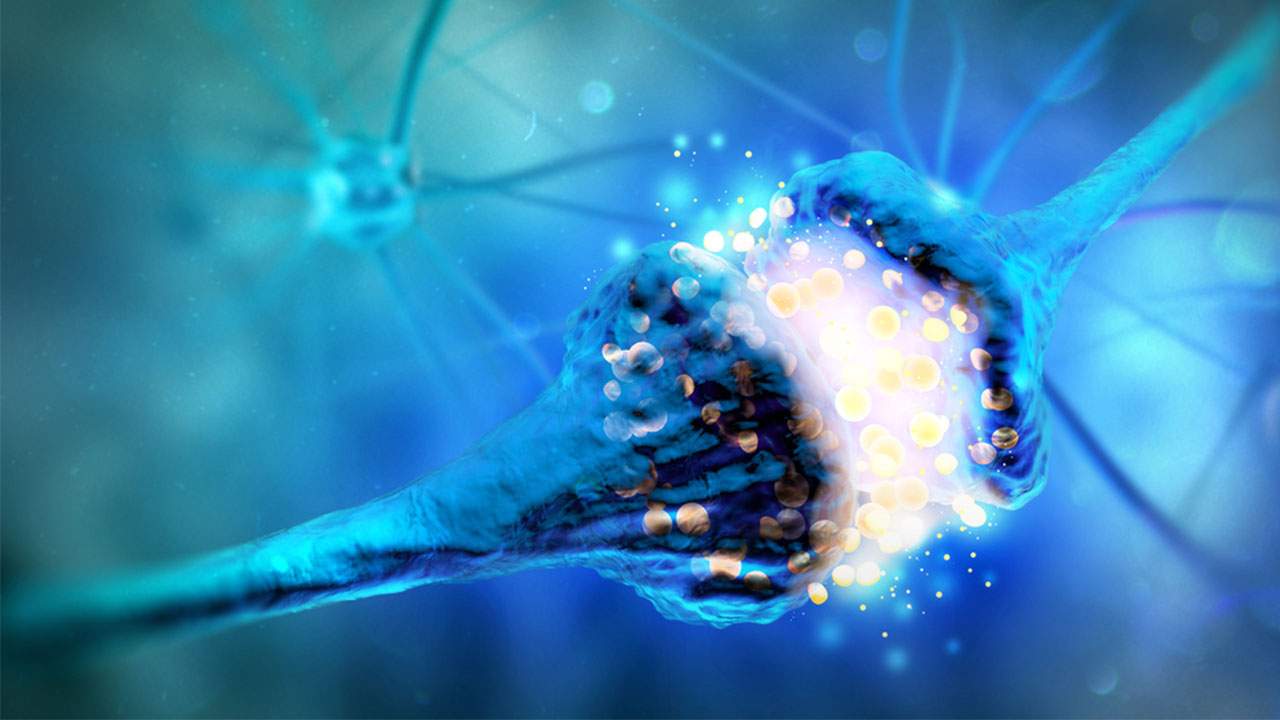The Relationship Between Energy and Amino Acids
 By: by Amino Science
By: by Amino Science

Energy is one of the primary markers of health. When people are asked about their health, low energy is often a common complaint. Likewise, when people are asked to identify a benefit from a nutritional supplement, “improved energy” is often the first thing they report. What many people don’t realize, however, is that energy and amino acids go hand in hand.
Almost everyone, even the most energetic among us, desires more energy. So it's no accident that energy drinks have become so popular. However, the concept of energy is somewhat vague. What does having energy really mean?
To understand the relationship between energy and amino acids, we must first distinguish between physical and mental energy. These two types of energy are clearly related, but distinct. By considering physical and mental energy separately, we can better understand the physiologic basis for each.
Energy and Amino Acids: What Fuels Our Bodies?
Physical energy requires not just fuel for our bodies but also all the necessary vitamins and cofactors—the inorganic substances needed for certain enzymes to carry out their functions—required to convert food to an energy form our cells can utilize.
Assuming all vitamins and cofactors are available, the energy necessary for physiologic functions is derived from combining carbohydrates, fats, proteins, and (in some cases) alcohol with oxygen in a process known as oxidation. These energy substrates—molecules acted on by an enzyme—can thus be considered the “fuel” of the body.
The major form of chemical energy in the body is a compound called adenosine triphosphate (ATP). Energy is released when ATP is broken down to adenosine diphosphate (ADP) and phosphate.
ATP is regenerated by the metabolism of the macronutrient (food required in large amounts for optimum nutrition) energy substrates mentioned above as well as by the oxidation of amino acids.
Chemical Energy and Mitochondria
The energy needed to perform physical functions such as exercise comes from the chemical energy stored in ATP. ATP is the universal fuel used by all cells.
In general, food is digested and absorbed as its basic components (glucose and other simple sugars, fatty acids, and amino acids), which are then used for structural needs, stored away, or oxidized for energy.
The oxidation of nutrients into chemical energy involves complex biochemical pathways. The Krebs cycle, named for its discoverer, Sir Hans Adolf Krebs—and also known as the citric acid or tricarboxylic acid (TCA) cycle—involves a series of chemical reactions in which carbon structures derived from carbohydrates, fats, and proteins are metabolized, with the production of ATP as a byproduct.
The TCA cycle operates inside mitochondria, which are specialized organelles within cells that are responsible for “digesting” nutrients and turning them into energy.

Oxidation of Amino Acids for ATP Production
The majority of physical energy comes from the oxidation of fats and carbohydrates. However, every amino acid in the body can potentially be oxidized to produce ATP.
The amount of oxidation undergone by the essential amino acids (or EAAs)—the nine dietary amino acids that can’t be produced in the body and must be obtained from food—determines how much of each essential amino acid you need in a day.
The amount of protein synthesized by the body will decrease if a steady supply of EAAs is not maintained, leading to conditions such as muscle loss and impaired immune function. Therefore, any EAA that is oxidized must be replaced through the diet.
The oxidation of EAAs is important physiologically even though only a minimal amount of total energy production is derived from this process. For example, at rest, less than 10% of energy production comes from the oxidation of amino acids.
Exercise greatly increases the requirements for ATP, and part of that ATP comes from amino acid oxidation. This is one reason why the consumption of a number of whole foods and supplements, including whey protein, is recommended in the field of sports nutrition both pre-workout and post. However, amino acid oxidation does not increase uniformly during exercise.
Among the EAAs, there is a selective increase in the oxidation of leucine. However, even with the increase seen during exercise, leucine oxidation provides only about 3% to 4% of energy for ATP production. Yet leucine plays a crucial role in regulating protein synthesis and other metabolic processes, so extra leucine needs to be consumed after exercise to replace what was oxidized.
While amino acids, particularly EAAs, do not play a major role in overall energy production, there are a number of aspects of amino acid oxidation that are important for the body’s metabolic regulation. To understand the critical nature of EAA oxidation is to appreciate that the body regulates the availability of all EAAs at a relatively constant level.
Consuming a high-protein meal causes EAA availability to increase. This increased concentration of EAAs stimulates their oxidation and minimizes changes in EAA availability. By contrast, if you do not consume enough EAAs through your diet, metabolic adaptations occur that reduce the rate of EAA oxidation.
The oxidation of specific amino acids is important for the body. For example, the availability of certain amino acids depends on the oxidation of other amino acids.
Take tyrosine, for example. This amino acid is produced in the liver from the oxidation of the EAA phenylalanine. Maintaining an adequate amount of tyrosine in the blood is critical, as tyrosine is a precursor of the neurotransmitters dopamine, norepinephrine, and epinephrine.
Specific tissues and organs also have metabolic preferences for certain amino acids. Most prominently, glutamine (a nonessential amino acid) is a preferred substrate for the gut.
Amino Acids Augment Mitochondria
Only recently have we begun to appreciate the difference in energy levels the number of available mitochondria and their ability to operate at full capacity can make. Both amino acid supplementation and exercise are known to increase numbers of mitochondria and enhance their function.
By contrast, alcohol or drug use has been shown to induce mitochondrial defects by increasing oxidative stress and damaging mitochondrial genetic material—deoxynucleic acid, or DNA. When alcohol damages mitochondrial DNA, it impairs mitochondrial function, which further increases oxidative cell stress, leading to a vicious cycle of accumulating cell damage and decreased energy production over time.
Mental Energy: What Balances Our Brains?
Energy drinks typically contain caffeine (with a range of 6 to 242 mg of caffeine, according to Consumer Reports) and perhaps some B vitamins.
Whether used to help one wake up first thing in the morning or as an afternoon pick-me-up, these beverages clearly aid in sharpening concentration and increasing the body's overall feeling of energy.
Surprisingly, when it comes to maintaining mental energy and focus, amino acids play as important a role as caffeine. In contrast to caffeine, however, amino acids impact mental energy by modulating neurotransmitters within the brain.
Many of the brain’s neurotransmitters are produced through the conversion of amino acids as they pass through the blood-brain barrier. In addition, two amino acids—glutamate and aspartate—are themselves considered neurotransmitters.
The interaction of neurotransmitters in the brain determines many aspects of behavior. To simplify a very complex system, the key determinant of mental energy is the balance between the neurotransmitters dopamine (excitatory) and serotonin (inhibitory).
The amounts of dopamine and serotonin in the brain are dependent on the availability of the precursors for their production. Tyrosine is the amino acid precursor of dopamine, and tryptophan is the amino acid precursor of serotonin.
Tyrosine is also derived from the oxidation of phenylalanine. However, neither phenylalanine nor tryptophan is made in the body, as both are EAAs.
Increasing the amount of phenylalanine consumed in the diet will, via conversion to tyrosine, increase mental energy by increasing the amount of dopamine in the brain.
Conversely, increasing tryptophan consumption, such as through the use of the dietary supplement L-tryptophan, will induce a feeling of sleepiness or lack of energy by promoting serotonin production.
Amino Acid Balance and Mental and Physical Energy
Amino acids help support both physical and mental energy via a wide range of actions. While supplementation with individual amino acids may produce particular reactions, disrupting the body’s balance by consuming a single or small combination of amino acids may be counterproductive when it comes to other functions.
An amino acid supplement containing relatively high levels of phenylalanine (tyrosine is nearly insoluble and difficult to add to a dietary supplement) and low levels of tryptophan can provide mental sharpness and focus. However, an isolated increase in phenylalanine can also induce Parkinson-like symptoms in susceptible individuals.
Likewise, consumption of leucine can counter the accelerated rate of oxidation that occurs during exercise, but the use of leucine in isolation will activate the oxidation of valine and isoleucine, thereby limiting muscle protein synthesis.
Consequently, to replace the oxidized leucine and enhance post-workout muscle recovery, it is necessary to provide all three of the branched-chain amino acids, or BCAAs—leucine, isoleucine, and valine.
Finally, all EAAs must be available in sufficient quantities to stimulate muscle protein synthesis, which is the metabolic basis for increased muscle growth, strength, and function.
Hence, the gold standard approach for the maintenance of both mental and physical energy involves choosing a free-form amino acid formulation that takes into account not only the direct actions of the component amino acids but also the importance of maintaining a relative balance of EAAs to sustain maximal benefit. And you can find it here!

Up to 25% off Amino
Shop NowTAGS: benefits
Join the Community
Comments (0)
Most Craveable Recipes




 833-264-6620
833-264-6620



















